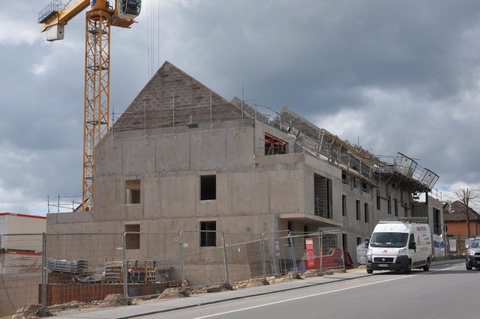
Evolution of the real estate market in the North of the Country
Sustained growth for the canton of Mersch
The prices of real estate observed in real estate agencies in the Grand Duchy of Luxembourg pursue their increase . Although great differences exist between the different regions, the North freeway contributed to increase demand and decrease offer in many a township located between the capital city and the Northern Region, the Oesling.
The famous “Nordstroos” opened to the public almost nine months ago, bringing the northern and centre cities and towns a bit closer to the capital and its employment poles. Mersch is thus some twenty minutes from the Kirchberg – against forty five only a few years ago -, Ettelbruck at thirty. Along the Alzette Valley the opening of the last stretch contributed to decrease the daily road traffic and to increase the tranquillity of people in such townships as Lorentzweiler or Steinsel.
Even though it took 18 years to join Ettelbruck and the northern part of the country to Luxembourg City with a high-end road infrastructure, it took much less time for the new 32km freeway to transform the real estate market of the North and Centre-North regions.
Decreasing offer, rising demand
For the past few years the number of items put on sale has been falling while the demand was rising. A discrepancy between the market for new and ancient homes can still be felt, but the trend is quite perceptible (sic). “I undertook a market analysis of the market in and around Mersch a few days ago, and I could record an actual fall in the offer. A few months ago we could find about 40 or 50 items on the market, and today we could only find about ten”, witnessed Guy Kartheiser, the manager of one of the largest real estate agents in Northern Luxembourg.
Demand for new dwellings has at the same time continued increasing. New housing development projects arise and, although a mere two years ago one had to wait for several months to sell them, a few weeks or even days are now plenty enough.
For the time being this effect is most obvious in the Mersch region and surrounding areas. But demand for dwellings in more northern cities, even though still moderate, is also increasing.
All townships however are not on the same footing. “Most of the clients looking for a dwelling are seeking places not demanding a lot of maintenance such as a large garden or a too significant habitable dwelling surface. They also want to be able to take advantage of modern commodities such as shops and leisure, close-by”, Guy Kartheiser also tells us. This, added to the fact that many people want to benefit from public transportation, leads to townships offering this kind of infrastructures being privileged.
Prices increase on a parallel with demand
The Luxembourg real estate remains characterised by the country’s unique geographical and demographic situation. The coming of some 8 to 10 thousand new residents every year and an offer only growing by some 2,500 to 3,500 new dwellings per year are certainly the most significant factors in the continuous real estate price increase. The townships located in the centre-north and north region likewise confirm the trend.
What with the new road facility, many townships along the way have seen their population increase. The Mersch canton has after Luxembourg-City witnessed the highest demographic growth of the past six years. The increase of that population contributes to the increase in demand. Those effects, coupled with the fall in the offer, goes to explain why real estate prices are going up more strongly than in other regions.
The figures put out by the Observatoire de l’habitat do not contradict that finding: it is indeed in the centre-north area that the highest increase in the mean prices of real estate is witnessed. Over a 12-month period, a jump of 15% for apartments and 4.5% for houses.
Although the prices shown in the Northern region remain relatively affordable when compared to the Centre area, the ease of access to that region, together with the opening of the A7 freeway, also seems to drive an increase in prices. The average prices for houses have increased by 6% over a year and by close to 4% for flats.
Carlos de Jesus
